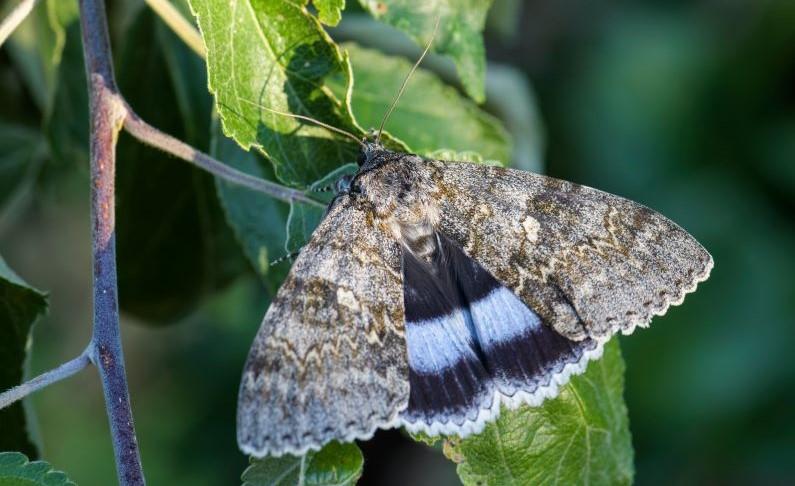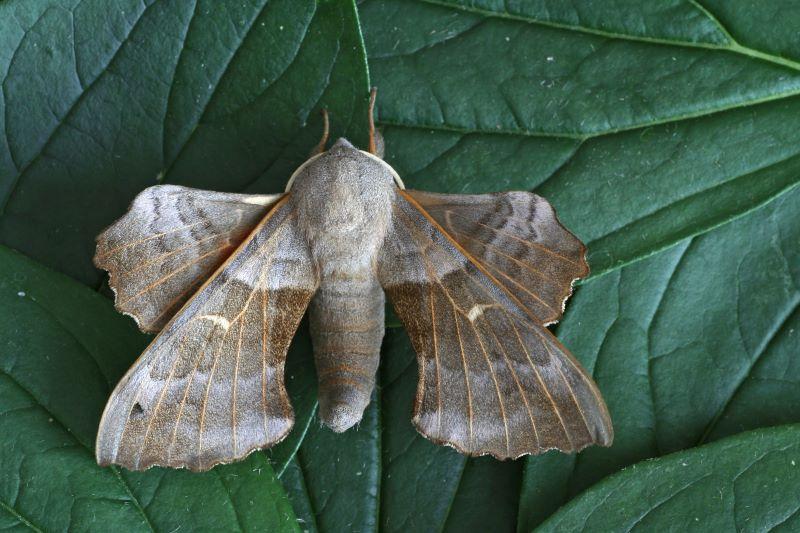
Moths in the Forest
In Britain, there are over 2500 species of moth. In the Heart of England Forest, over 390 species have been recorded in the last 12 years and over 540 species since the 1940s – around a fifth of the total for Britain! Sam, our Biodiversity Data and Survey Officer, introduces the many impressive moths you could see while out and about in the Forest, and explains how we are working to help reverse their decline.
What are moths?
Both moths and butterflies are part of an insect group called the Lepidoptera. The most notable difference between moths and butterflies is that moths have feathery or comb-like antennae, while butterfly antennae are thinner and have ‘clubs’ at the end. Another important difference is that moths mainly fly at night, although there are many day-flying moths too.
Species you could spot on your Forest walks
Blood vein moths
The blood vein, despite its somewhat gruesome name, is a beautiful and easy-to-identify moth, common in the Spernal area. It is cream in colour with a red line (the ‘blood vein’) running from one wingtip to the other.

Scarlet tiger moths
A common day-flying moth to look out for is the majestic scarlet tiger moth. This moth has black forewings with white and yellow spots and red and black hindwings, making it unmissable if it flies by.

Poplar hawk moths
If you are particularly lucky, you may come across the largest hawk-moth in the UK, the poplar hawk-moth, which was seen in Robert’s Wood near Dorsington last year.
Despite it now drawing into winter, this does not mean that you cannot still find moths. The appropriately named autumnal and winter moths can be found around Bannam’s Wood at this time of year, although their grey camouflage makes them very difficult to spot.

Habitats for moths
Some moths are very specific to feeding on certain plants which can only be found in certain habitats. The southern wainscot and obscure wainscot are nationally scarce local wetland species which have been seen in the Spernal area of the Forest and mainly feed on reeds.
Many species benefit from the woods in the Heart of England Forest, from the new plantations to the ancient woodlands. Robert’s Wood is only the third place in Warwickshire where the ruddy carpet moth has been found and is an outpost for the nationally scarce silver cloud. Small brindled beauty, September thorn and oak hook-tip thrive in the ancient woodlands around Spernal.
Some of our woodlands have even been nationally recognised for the number of moth species present. Bannam’s Wood, near Morton Bagot, is a Site of Special Scientific Interest (SSSI) partially due to the number of moth species recorded here – 264!

The future for moths
Unfortunately, moths have declined like many other animals in recent decades. Two thirds of the most common species have declined in numbers in the last 40 years, and the overall number of moths has fallen by 28% since the late 1960s.
With the habitat creation, restoration and conservation work we are doing at the Heart of England Forest (with not only woodlands, but also grasslands, wetlands and other habitats, too), we are hoping to help reverse the decline of our moth species.
However, there are some species which are expanding into our area. Many species are beginning to move northwards, and some are beginning to colonise Britain from the continent. This includes the clifden nonpareil (also known as the blue underwing), one of the largest and most impressive moths in Britain. It can have a wingspan of almost 10cm! The species feeds on aspen, a common tree in the Forest, but the moth has not yet been recorded – could you perhaps be the first to find this moth in the Heart of England Forest?

Share your findings
We would love to see photos of any moths that you spot when visiting the Forest. Share your pictures on Facebook, Instagram, or Twitter, or send them to info@heartofenglandforest.org and you can help us to record these important species.
Further reading
The varied habitats found in the Forest also attract many butterfly species. Find out from volunteer and butterfly lover, Ramsay, about the best places to spot butterflies in his article.



